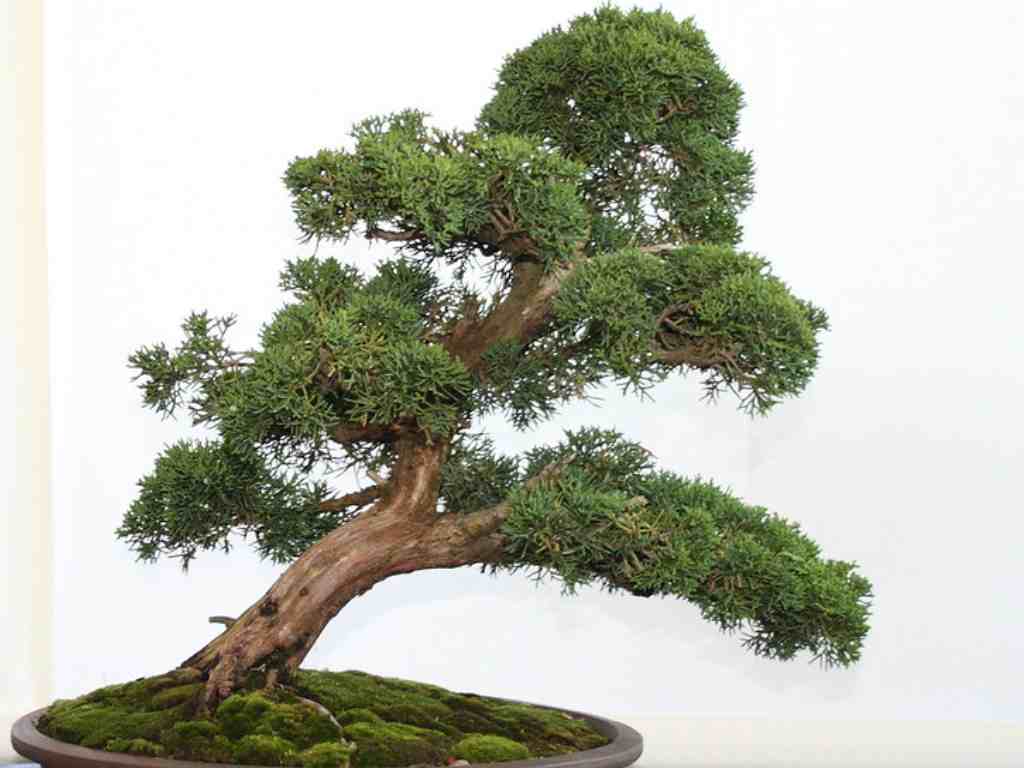Can a Juniper bonsai live indoors? Not every home has the perfect environment to keep it healthy, happy and thriving. The good news is that there are solutions out there that can make this happen if you’re willing to take the time. Check out our guide on how to grow a Juniper bonsai indoors and see if you can help it thrive!
Is Juniper an Indoor or Outdoor Bonsai?
To be honest, junipers are predominantly outdoor bonsai trees. It requires a lot of sunlight and moderate water.
However, if the temperatures drop below zero degrees Fahrenheit (-18 degrees Celsius), bring in your Juniper to protect it from any damage.
Problems With Keeping Juniper Bonsai Inside
The problem with keeping outdoor bonsai trees inside is that outdoor trees have dormancy periods in the winter. These periods are completely natural and necessary for the tree’s growth.
Another problem with growing Junipers indoors is that they prefer plenty of sunlight. They can be grown as indoor bonsai only when artificial light is used.
The Different Varieties of Juniper Bonsai Trees

Junipers come in two forms; one with scale-like leaves and the other with needle-like leaves.
Scale-like Leaves:
Chinese Juniper:
They have scale-like foliage and the color varies from yellowish-green to bluish-green or silver-green.
The Japanese Shimpaku:
They are a Chinese kind of juniper, and they grow well in Japan.
Itoigawa Shimpaku:
They have delicate emerald-green foliage.
Needle-like leaves:
The Common Juniper:
It is a kind of tree that grows around the world. The needles on this tree are smaller and sharper than those of another kind of tree called the Japanese needle.
The Green Mound Juniper Bonsai:
This plant is from Japan and has needle-like leaves. The needles are shorter, more compact, and bluish-green like some scale-like leaves.
How I Keep My Juniper Alive Indoors
When winter comes, most juniper bonsai trees will enter a dormancy period. This is natural and necessary for plants’ survival.
By keeping your tree dormant, you can promote new growth in the spring and summer.
During dormancy, the bonsai will need water to survive. Normally they get this water from the soil but if you are growing juniper in containers don’t forget to water the plant every two weeks.
Keep the plant in a garage or shed and make sure the environment remains cold.
It is crucial to keep your juniper bonsai away from any kind of heat vents. Otherwise, it won’t go into dormancy.
Juniper Bonsai Care Requirements
Junipers aren’t an easy tree to keep indoors. Lots of factors can result in death, including light, soil, and lack of water.
Light:
At least four hours of direct sunlight per day is ideal and will help your juniper bonsai grow strong and healthy. During the spring, summer, and fall, keep your juniper bonsai outdoors.
Water:
Before watering, allow the soil to dry slightly (without allowing it to completely dry out). Juniper roots don’t like their soil to get too wet.
Misting your juniper bonsai tree regularly is a good way to ensure it remains healthy and doesn’t suffer from excess heat or cold.
Fertilizer:
Make sure you feed your juniper bonsai every month with organic fertilizer pellets during the growing season. If you want to speed up growth, give them a liquid fertilizer with high nitrogen once a week in the spring.

Which Kind of Bonsai Can Be Kept Indoors?
Tropical and subtropical trees are best for growing as indoor bonsai. Some of the popular bonsai trees are :
- Ficus,
- Dwarf jade,
- Fukien tea,
- Sweet plum, etc.
Things You Should Know About Indoor Bonsai
Remember you need to treat bonsai trees differently than your regular houseplants.
Because Bonsai trees are planted in a container, the availability of necessary nutrients and water is limited to where they are planted. And tropical trees need high humidity and light which become difficult to maintain indoor.
Treat any bonsai as the regular large trees that need light, humidity, and temperature as much as them. Apart from tropical and subtropical bonsai trees, it is very difficult to grow other bonsai trees indoors.
When Should I Bring My Juniper Indoors?
A juniper bonsai tree is not an indoor plant. It can survive indoors for a few days before requiring some sunlight to overcome the shock of the change in the environment. A better idea is to bring in your juniper bonsai tree when you have guests.
Your juniper bonsai will struggle to survive if you keep it indoors for long. So don’t make the mistake of moving it inside for too long.
Conclusion:
Juniper bonsai grows best in outdoor conditions. But if you want to grow them indoors, you need to adjust the growing conditions that mimic outdoors.
I hope you have gained some valuable information from this post. Make sure you follow the guidelines, and you will be just fine.